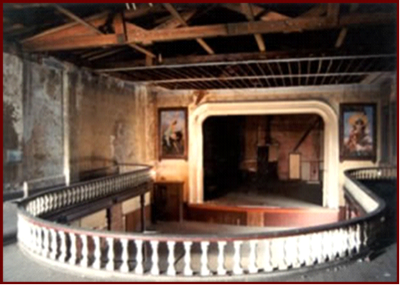The term “green” is so overused in today’s society that it almost defines cliché. Today it seems that every organization wants to be and claims to be green. In many cases the rhetoric goes farther than the reality. A lot of things are marketed as green, but many may not really be as environmentally friendly as proposed.
At the time of the Deepwater Horizon accident in 2010, British Petroleum’s mission statement read, “We help the world meet its growing need for heat, light and mobility. We strive to do that by producing energy that is affordable, secure and doesn’t damage the environment.” It all sounds so idyllic, like cows eating grass. Even the company’s logo is designed to make a green statement. It has the bright yellow sun shining in the middle, surrounded by a ring of green leaves, like a big sunflower. According to the February 2015 BP Gulf Recovery Factsheet, BP has spent approximately $28 billion on response, cleanup, early restoration, and claims payments. There were 1,096 miles of shoreline that had some oiling, and 776 of those miles required some measure of cleaning. We are not trying to vilify BP, but what they found out is what Kermit the frog told us long ago. “It’s not easy being green” (The Jim Henson Company Muppet Character)!
There is, however, a practical side to being green. The reality is that green often comes in shades, and grows over time with care and watering. Sometimes we have to take smaller, more strategic steps that together add up to a greater impact. It is important to look at the overall situation in your community as you identify which green projects are the best fit for your downtown.
Why Green Building is Important
Building construction and demolition is one of the areas where a real impact can be made on the environment. Buildings are such a significant part of our daily lives. They are so large in terms of the amount of natural resources that it takes to construct and operate them, that how we design and build them is very important. Wendy Nicholas, Director of the Northeast Regional Office of the National Trust for Historic Preservation, says that “…43 percent of America’s carbon emissions come from the operation of buildings – and this doesn’t include the carbon that is generated by extracting, manufacturing and transporting building materials.”
There is a great need for green building in order to reduce the marked depletion of our natural resources. A green building is a building designed and constructed to be occupant and environmentally friendly throughout its entire life cycle, from cradle to grave. Sustainability, energy efficiency, and healthfulness are important factors that need to be considered.
Downtown Redevelopment is Inherently Green
Downtowns are inherently green in a variety of ways. Downtown development is naturally clustered together in a compact manner to preserve farmland and open space. It also cuts down on the need for energy burning transportation by making it easy to walk from place to place. In writing on small-city downtowns, Kent Robertson, Professor of Community Studies at St. Cloud University said, “While every small-city downtown has a different combination of assets, three broad characteristics tend to apply nationwide: small-city downtowns are multi-functional, pedestrian friendly, and vital to the community’s heritage.”
Downtowns are also typically full of existing buildings. Redeveloping existing buildings conserves natural resources by reusing what is already there. Every brick, board, tile, duct or fixture that you can reuse is one that does not have to be taken from our existing finite pool of available resources. Architect Carl Elefante, who is the Director of Sustainable Design at Qunin Evans Architects in Washington, D.C. said it very succinctly. “The greenest building is the one that is already built.”
Older Buildings, such as the Woodward Opera House, Often Have Green Features

Older buildings were also often built with more green features than we realize. For example, the Woodward Opera House in Mount Vernon, Ohio was built in 1851, and is called America’s oldest authentic theater. In it a variety of theatrical and musical performances took place until it closed its doors in the mid-1920s. Though there were retail uses in the bottom floor, the theater and much of the building sat vacant for decades. In the 1970’s there became an interest in reviving the theater, and it is now in the midst of a total renovation. Here are a few examples of green features associated with this building:
⦁ It is part of the compact development within the downtown area, contributing to the conservation of land use. It shares a common wall with the neighboring building.
⦁ Much of this building was reusable. Most of the brick exterior and the structural framing was reusable, as were a number of architectural elements and much of the hardwood flooring.
⦁ The operable double hung windows being installed are much like the originals, and are another natural sustainability element in that they allow for sunlight and fresh air to enter the building. We should also mention that double hung windows are one of the architectural elements that the National Trust of Historic Places mentions as lending to sustainability. Old buildings were often better designed than we give them credit for, in a time before air conditioning and electrical lighting as we know it today. Double hung windows not only provide natural light, but opening the bottom of the windows on the shady side of the building lets cool air in and the top of the windows on the sunny side of the building lets hot air out.
⦁ Thick masonry walls help to store heat or cooled air, and recessed entryways help to keep hot or cold air from rushing into the building.
⦁ Building materials used in the original construction of the building were primarily local, which decreased the amount of fuel used to transport the materials.

Additionally, the building was durable, as is clear from the fact that it is still here. The completed renovation will be well worth the effort put into this project, and adds much to the downtown.
Five Guiding Principles For Sustainability
We would like to share with you five guiding principles to make downtown developments more “green”.
- Optimize the use of sun and wind. Consider how sunlight and wind hit the buildings at different times of the year. For example, placing retractable awnings over the windows on the fronts of buildings helps to keep out the hot summer sun, but allows for warming winter sun. Operable shutters can serve the same purpose. The Ohio State University recently built a small, high-tech, experimental green technology house. One of the primary features is automatically operating shutters over windows and other openings in the building envelope. You would be surprised how much heat gain results from one large south facing window. Another example would be to provide some operable transoms over doors to allow for cooling breezes to enter the building. Another option would be to plant deciduous trees, which provide cooling shade for pedestrians and buildings in the summer, but let the sunlight through during the winter. They will have the side benefit of reducing carbon dioxide and creating oxygen.
- Improve indoor air quality. One element that can assist with this goal is the selection of materials that limit out-gassing of volatile organic compounds, have no toxic properties, and do not shed fiber or dust. A second important element is to ensure that your heating equipment is not back-drafting and introducing carbon monoxide into the building. It will also be important to eliminate moisture sources that produce mold, mildew, and fungus.
- Use the land responsibly. One idea is to limit the use of impervious surfaces to reduce storm water runoff and contamination of local water sources. One example of how to do this is through the use of “Green roofs”, which are roofing systems that include plants such as sedum that actually use the water. These need to be well engineered or they may be problematic. An alternative idea is to capture and recycle the storm water runoff. Depending on the type of roof, storm water can actually be fairly clean, but may also be filtered and then recycled to water plants, flush toilets, etc. Of course, considerations about the reuse of existing sites and the density of development also fit into this category. We will share more about that in another article.
- Create high performance and moisture resistant buildings. High performance buildings use building science to function in an efficient manner and to ensure the health of the occupants. One idea is to seal cracks and gaps in the building envelope to reduce drafts, keep moisture out, and keep conditioned air in. Another idea is to use controls to ensure that the building operates efficiently. One example is to place exhaust fans on a humidistat, so that it only and always operates when moisture is present. This is better than the method that many of us use at home, which is to leave the bathroom exhaust fan on until you get sick of listening to it, and then turn it off. Using better building science can prevent bathroom moisture problems such as mold and peeling paint. By the way, though they cost a little more, they now make exhaust fans so quiet that you can’t hear them. We also recommend following energy star guidelines in the construction or rehabilitation of buildings and in the selection of appliances, lighting options, etc.
- Wisely use the earth’s natural resources. When possible, choose building materials with high levels of renewability, reusability, and durability and low levels of environmental impact and embodied energy (the energy required to extract, process, and transport the materials). When possible, you should reuse or recycle materials such as brick, stone, glass, tile, wood, or metal. I also recommend buying locally produced products whenever possible to reduce additional energy use and the pollution associated with transportation. Finally, try to find uses for construction waste, such as shredding wood scraps for mulch or recycling the old light fixtures by separating your construction waste into metal, glass, etc.
Practical Steps to Implementation
You should also think about green development from an organizational perspective. How can you help in the greening of your Community? Examples include the following:
⦁ Working to create stronger partnerships with other agencies;
⦁ removing barriers to success;
⦁ recognizing that green development takes time and planning;
⦁ being creative in seeking out funding for planning and green development; and
⦁ encouraging green development through policy.
There will also need to be guidelines set for green projects. Consider developing a set of uniform standards for green development. Don’t start with setting the bar too high, but develop guidelines that can be used as a starting point. We encourage you to develop a rating system for competitive programs. Criteria regarding green development can be stand alone or built into current rating criteria, but it is best to use a weighted scale, as some elements are more valuable than others. There are standardized systems that we recommend you use as a starting point, such as Enterprise Green Communities, LEED and Energy Star, though they may need to be adapted or expanded to fit your specific circumstances. Some elements of green development do require a high level of knowledge and skill, so it will be important to train staff and seek technical assistance.
Though the concept of “green” is overused, there are steps toward sustainability worth taking. Downtown development is intrinsically green, and provides a good basis for a variety of health, energy efficiency, and conservation efforts. It is important for each of us to continue to move forward with these efforts. Each step taken is an investment towards creating a stronger community and a better future.


